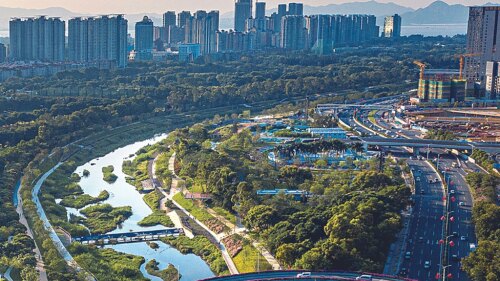Conservation for Cities: How to Plan and Build Natural Infrastructure
Robert I. McDonald
Island Press
2000 M St NW #650, Washington, DC 20036; www.islandpress.org
2015. 280 pages. Paperback, $30.00.
Robert McDonald writes from Washington, D.C., where he is a senior scientist for sustainable land use at the Nature Conservancy. In this modest and succinct primer, he explains with an engaging informality ways to deal with many of the standard environmental shortcomings affecting U.S. cities, whether caused by the forces of nature or by human misuse. He also inserts anecdotes from his personal experience, but mostly this book describes a rational and realistic planning, problem-solving, inventory, implementation, and monitoring process that could apply to a range of interventions from modest to bold.
The author views the relationship between nature and cities from an anthropocentric standpoint that accords with the words of eminent biologist Rene Dubois in his book, Wooing of the Earth (1980): “Starting from natural conditions, human societies have created cultural environments (including cities). . . . a process of feedback characteristic of all ecological systems.” Working from this premise, McDonald outlines a framework for adapting the forces and attributes of nature for cities, rather than clinging to the romantic ideal of protecting nature from cities.
“Resilient cities” are those that have taken measures to deal with probable shocks, whether or not these are related to the consequences of climate change. But resilience has also taken on a new urgency in light of efforts to recover from Hurricane Katrina and Superstorm Sandy. The author notes parenthetically how, in the case of Sandy, many observers reacted as if this were an unprecedented disaster. But that was not actually the case. Long before the storm, Nicole Maher of the Coastal Resilience project presented technically derived findings to residents of Long Island indicating which locations were most vulnerable to flooding. “Folks who were here in the 1938 hurricane said what flooded then matched up with our map.” When Sandy hit, Maher and her team already knew the collateral damage was “entirely predictable.”
Coastal Long Island is one example of this book’s framework for urban natural resource management, what the author calls “eco-services.” This somewhat wonky term was coined by environmental economists who in recent years have been searching for ways to put natural infrastructure on par with conventional goods and services via rational measurements. Computer modeling software plays a big role in quantification, and a variety of mapping and evaluation options are now available to public agencies and consultants. McDonald avoids going into too much detail, but he does go far enough to cite tongue-twisting programs like Fog Interception for Enhancement of Streamflow in Tropical Areas (FIESTA), or Gridded Surface/Subsurface Hydrological Analysis (GSSHA) and in what contexts they apply. Popular mapping sources such as GIS and GoogleWalkscore also are referenced as useful tools.
Measuring the aesthetic benefit of street trees or the morally implicit value of biodiversity can be especially challenging, and here, as in many other chapters of the book, the author treads into more nuanced or technical territory. Other chapters cover eco-service processes for parks and mental health, recreation and physical health, air purification, coastal protection, floodwater, stormwater, drinking water, and even tree shade. Distinctions are made between “gray infrastructure” solutions (piping, permeable pavements, and so on), “green infrastructure” solutions (wetland restoration, urban forestry, etc.), and overlaps between the two (green roofs, curbside stormwater retention zones, etc).
To what extent readers of this useful volume can successfully apply its lessons to their own communities depends in large part on whether there are local political willpower to lead and budgets to fund. Too many natural infrastructure needs have gone wanting regardless of the threats implicit in an age of climate change. “We have become an urban species,” McDonald concludes, “whether or not Homo sapiens are ready for this transformation.”
Martin Zimmerman writers frequently for Urban Land and directs the Green Mobility Planning Studio USA in Charlotte, North Carolina, a firm with expertise in smart growth, urban place making, and multimodal transportation.





